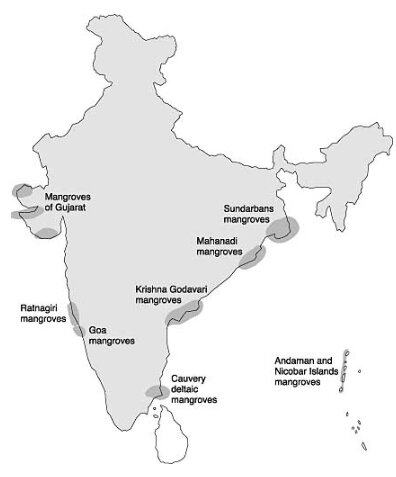UPSC Articles
Salt-secreting Mangrove Species
Part of: GS Prelims and GS-III – Biodiversity
In news For the first time a reference-grade whole genome sequence of a highly salt-tolerant and salt-secreting true-mangrove species, Avicennia marina, was reported in India recently.
About Avicennia marina
- Avicennia marina is one of the most prominent mangroves species found in all mangrove formations in India.
- It is a salt-secreting and extraordinarily salt-tolerant mangrove species that grows optimally in 75% seawater and tolerates >250% seawater.
- It is among the rare plant species, which can excrete 40% of the salt through the salt glands in the leaves, besides its extraordinary capacity to exclude salt entry to the roots.
What is the significance of the study?
- This study assumes significance as agriculture productivity globally is affected due to abiotic stress factors such as limited water availability and salinization of soil and water.
- Availability of water is a significant challenge to crop production in dryland areas.
- Salinity is prevalent in ~900 million hectares globally and it is estimated to cause an annual loss of 27 billion USD.
- The genomic resources generated in the study will pave the way for researchers to study the potential of the identified genes for developing drought and salinity tolerant varieties of important crop species of the coastal region that is significant for India.
What are the mangroves?
- Mangroves are a unique group of species found in marshy intertidal estuarine regions and survive a high degree of salinity through several adaptive mechanisms.
- Mangroves are important resources for the coastal region and are of great ecological and economic value such as:
- production of woody trees
- provision of habitat, food, and spawning grounds for fin-fish and shellfish
- provision of habitat for birds and other valuable fauna
- protection of coastlines and accretion of sediment to form new land.
- They form a link between marine and terrestrial ecosystems, protect shorelines, and provide habitat for a diverse array of terrestrial organisms.
- According to the India State of Forest Report, 2017, India has nearly 3.3% of the world’s mangrove vegetation.

News Source: PIB














